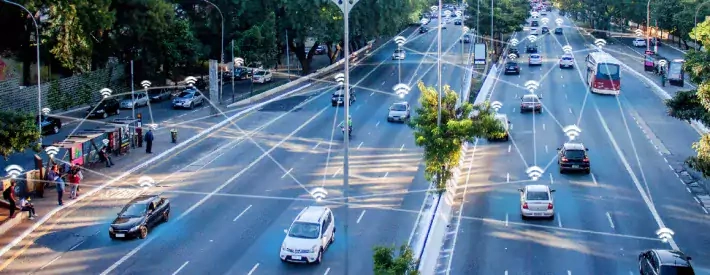How to protect yourself in a connected world

Modern communication requires integrated digital connections. This is already the case for our personal and business operations – a requirement that’s grown even more since the COVID pandemic – and it’s now becoming normal for vehicles to be connected too. But once they are digitally connected, cybersecurity becomes an important factor.
Fully autonomous vehicles are a little way into the future, but connectivity is becoming a must-have feature. All new cars on the road will probably have network connections as well as vehicle-to-vehicle connectivity by 2025. This will potentially enhance the driving experience, offering features such as improved navigation and maintenance. However, when combined with smart telematics and cloud technology, it has the potential to transform the entire automotive industry.
Many connected features are already in use, but this area is likely to expand to include:
- Improved navigation
- Infotainment
- Fleet management
- Predictive maintenance
- Enhanced safety and security
- Insurance options
- Autonomous operations
Vehicles will communicate with each other to gather data such as speed, journey times, road conditions and weather, which has the potential to reduce carbon footprints by reducing congestion and accidents.
Vehicle-to-everything
Connected cars will offer experiences similar to those on a mobile phone or desktop voice assistant. Music on demand and social media are already available when the car and a smartphone are connected, but once these features are integrated into the vehicle, manufacturers can unlock an entirely new source of revenue – streaming movies, for example – while voice control offers even more possibilities.
Fleet operators can also gather data about vehicle operation and driving behaviour, as well as sending real-time updates to drivers. Meanwhile, vehicles can be monitored for faults then create and send maintenance messages autonomously. The key benefit here will be reduced downtime.
Continuous monitoring of driver performance could be regarded as Big Brother-type behaviour, but assessing wellbeing and providing up-to-date traffic and maintenance information will be useful. A smart, fully connected system to automatically record loading and unloading will, for example, reduce the need for stocktaking and streamline searching for items. This has the advantage of shortening delivery times and making timings more predictable.
Predictive maintenance will be possible because of data gathered from repair trends. Data from similar vehicles, parts, driving behaviours and onboard sensors will allow predictions that will reduce parts failure, breakdowns and even accidents. Repair and maintenance companies will need to consider this trend as harvesting this type of data could mean being able to offer customers a spare part or service before they even know they need it.
The concept of shared ownership or pay-as-you-go becomes a possibility with connected vehicles, marking a significant change from our current ownership model where most cars don’t move for 95% of the time.
The insurance industry is also changing thanks to the use of dashcams and smart boxes plugged into the data link connector. These technologies provide cost benefits for the users, as well as reduced risk and improved profits for the insurers. Connected records of driver behaviour, speed, mileage, driving conditions, mobile phone usage, and other activities could enable dynamic insurance premiums.
Many vehicles are already connected to the internet, either through their own cellular SIM card or via a USB or Bluetooth-connected mobile phone. Few vehicles communicate with each other at present, but this will change in the coming years.
Cellular vehicle-to-everything connectivity is likely to start using 4G links, but the transition to 5G’s higher bandwidth will facilitate the extensive communications needed for autonomy and other features. However, cybersecurity will be a major issue for all connected vehicles.




